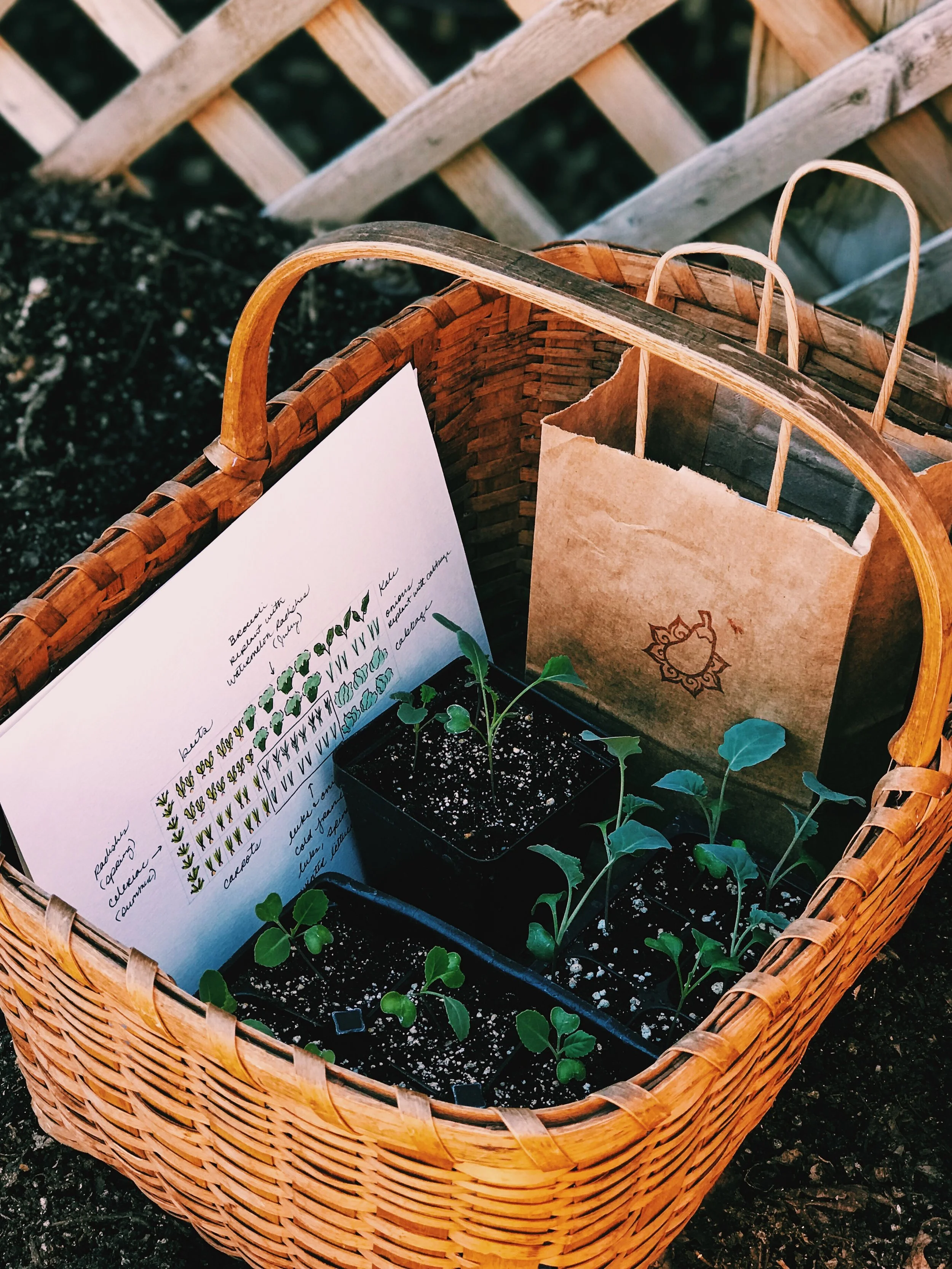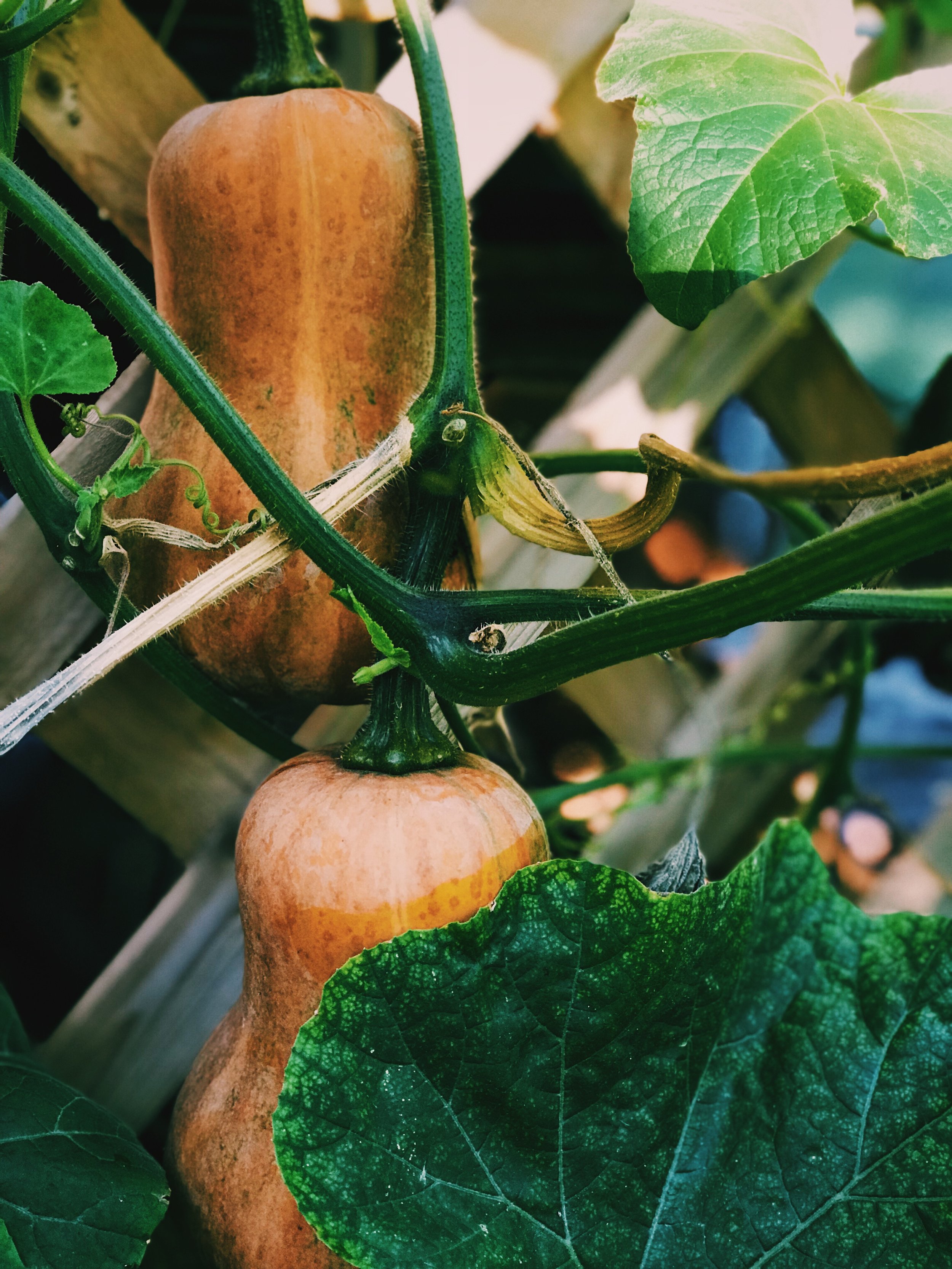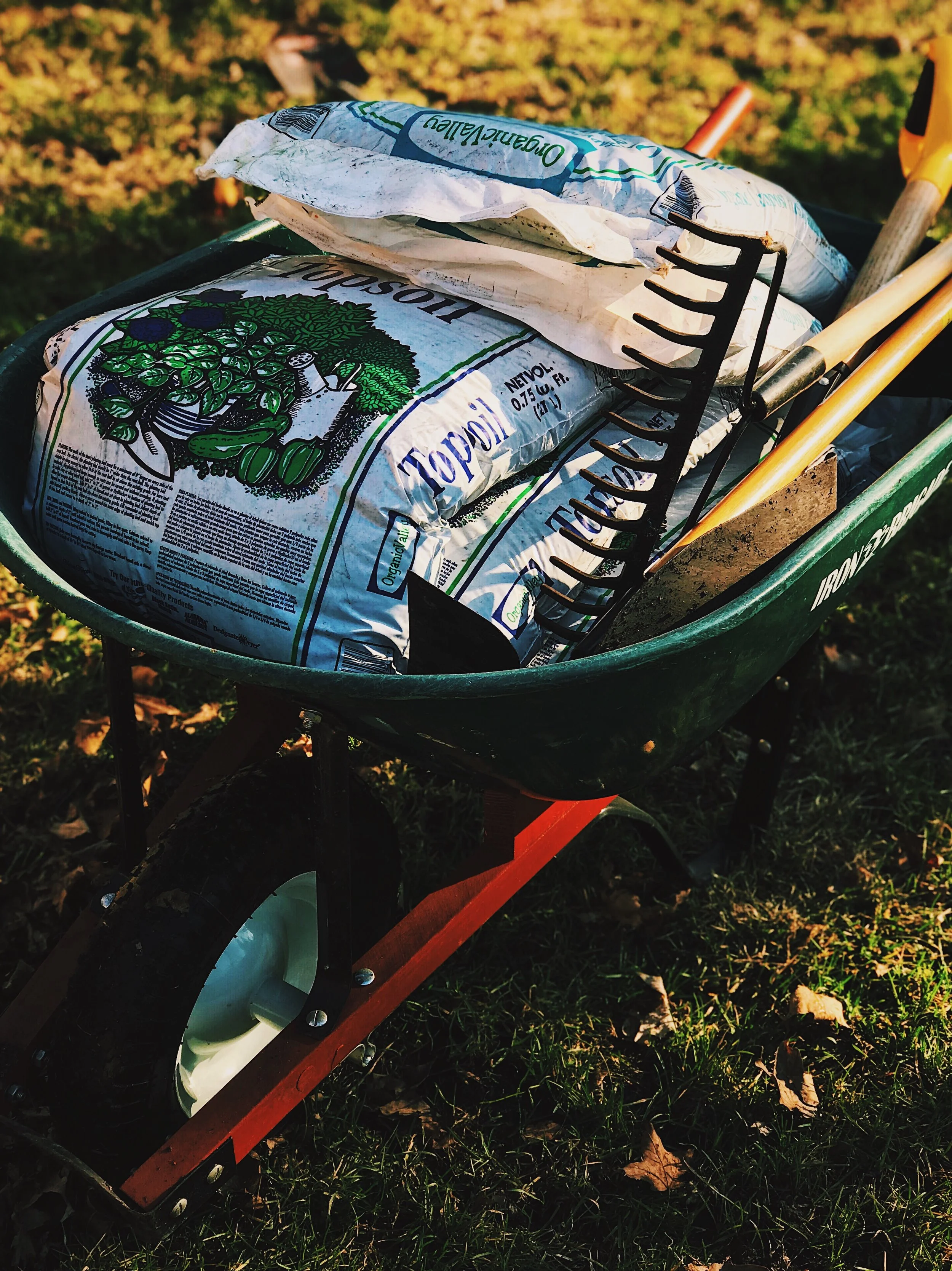My Garden Beds
Making garden plans is so much fun. I love to think though all different varieties of fruits and vegetables, even way more than I could plant, then hone into the very best plants to grow for our palette, yield, and growing season. I also like to include a few varieties of things I have never grown or cooked to keep things interesting in the garden and kitchen. Check out the vegetables that are new to the garden this season.
As I go through each of my garden bed plans, I am using succession planting within my garden beds to get the most out of our growing season. Succession planting is when you finish harvesting a short or mid season crop and replant that empty space with a new short or mid season crop – that's why within the scribbled notes you will see 'April-June' or 'April-July.' These are around the times I see short to mid season crops lasting in this garden bed, before I harvest them completely and plant something new in June. Finally, to map out how much space each plant needs, I usually stick to the plant spacing recommended on the seed packets. I will note when I stray from this.
I have included the last two seasons of garden beds in this post, so you can see how the space changes season to season.
2019 Garden Plans
Brassicas & Roots Bed
I practice crop rotation in my garden beds - check out my garden planning post for the full details - so I keep plant groups together and rotate them through each bed. This year, I have swapped the beds, so it is the same vegetables together, just different beds.
This season I am planting broccoli, lacinato kale and cone-head cabbage for my brassicas. I also have an onion patch and a row of leeks breaking up the brassicas, to help with pests throughout the summer. Since onions and broccoli are mid season crops, I plan to replant these sections with spinach, winter lettuces and watermelon radishes once the onions and broccoli are harvested in July. I am also planning to build a cold frame and try overwintering a few of the hardier vegetables. Stay tuned!
The roots bed is full of the classics this year - carrots, beets and celeriac. I will keep these beds for the whole season, replanting carrot or beet seeds where vegetables are harvested. I am planting a mix of Tri-color carrots, King Midas, and Dragon (a beautiful red carrot!). For beets I am planting a Jewel mix, Golden and Sweet Merlin.
Fruits & Legumes Bed
The season I have dedicated a larger chunk of my bed to the fruiting vegetables as I really want to squeeze in an additional tomato plant. This year I am growing two Sicilian Rosso tomatoes, two Striped Roman tomatoes and one Beefsteak tomato. In the corner of this bed I am growing a Costata Romanesco - an Italian variety of zucchini. I am going to let this grow into the back pathway along the fence to give it plenty of space to sprawl. Between the tomatoes I am planting heads of lettuce in the spring, as the tomatoes won’t be planted until the nighttime temps are steadily at 55 degrees. As the tomatoes grow they will shade the lettuce, allowing them to grow out of the summer heat.
In the legumes bed, I start in the spring by planting radishes and spinach across the bush bean plot. Bush beans should not be planted until nighttime temps are above 50 degrees. Once the spinach and radishes are harvested, I will plant the beans - I am doing a mix of edamame, dragons tongue, and tri-color bush beans. On the end of this bed up a trellis, I will plant a mix of snap and shelling peas. I will do two plantings of peas, one in spring and one in late summer for both a spring and fall harvest. I am planting Golden Sweet, Magnolia Blossom, and English Shelling peas.
Winter Squash Patch
This season I have decided to move my winter squash out of the beds and grow them up a section of our chain link fence near our rain barrel. I am growing both Baby Butternut and Delicata. Looking forward to seeing how they grow in this new location!
2018 Garden Beds
Fruit & Legumes Bed
This season, I am growing both my legumes and fruits in the same bed, so in the following seasons, the crops will move through the crop rotation plan, and not be back in this exact location for four seasons. I usually split the bed down the middle, planting one crop group on each side of the bed. Within the fruits and legumes bed, I break the rules a bit, as fruiting vegetables need more space than my legumes. I have given my fruiting plants 4' x 7', and legumes 4' x 5.'
In the spring, I like to plant cut-and-come-again lettuce, mustard greens, and head lettuce in the fruiting vegetable section of the bed. Most fruiting vegetables should not be planted in the garden until the temperature outside is above 50-55 degrees, around late May, early June. As these plants go in the ground, they will still be small, and not take up the full amount of space given them in the garden for a few more weeks, leaving room for greens to continue growing until the weather gets too hot and they start to bolt. I enjoy growing head lettuce in the tomato patch as the tall plants shade the lettuce heads as they continue to fill out in early summer.
Within the legumes patch, I am going to test out growing a bit of spinach early in the spring before the bush bean seeds go in the garden, harvesting the baby spinach leaves for early spring salads. I am not a fan of leaving empty space in the garden, and since greens are delicious young or fully mature, I figured, why not try it out!
Brassicas & Roots Bed
For my roots and brassicas bed, I again have broken the crop rotation rules a bit. Since root vegetables are my favorite to grow, I dedicate more space in my garden to these type of vegetables, giving them 4' x 7', and the brassicas 4' x 5.' I also practice succession planting in the roots bed, but the timing is a bit different as most brassicas and root vegetables are mid-season crops, so I am planning to have vegetables in the ground late April through July, then replanting with cold hardy plants in July, letting them grow until the first hard frost. For example, I will be succession planting carrots and beets in the garlic patch after the garlic bulbs are harvested in late July, early August. I will plan on harvesting these young carrots and beets right before the hard frosts, as end of season baby veggies.
Asparagus Patch
On the outside of the brassicas and roots raised bed I have a small asparagus patch. It is around 1'x4' of space, surrounded by a tall garden cage to help the asparagus fronds stay standing. Asparagus plants are perennials, meaning they only need to be planted once, and will produce for many years. I have even heard of people having the same asparagus patch for 50 years!
My asparagus patch is actually the home for a little garden toad, which my husband and I named Trevor (yes, the connection the Harry Potter is intentional). Toads are great to have in the garden, as they actually consume around 1,000 insects per day! Toads also stay where they can find food, water, and a cool shady spot to rest, and will actually turn this space into their home! You could have the same toad in your garden for several years. So so cute right?
Strawberry & Rhubarb Patch
Ok, enough about Trevor, let's talk about strawberries! The strawberry and rhubarb patch is within a 2’x8’ raised bed. Since strawberries and rhubarb are perennials, I plan to keep these spaces in my garden dedicated to these plants. Rhubarb and strawberries actually help each other grow, and go so well together in pies and jams. I add a mix of herbs in this space as well, as thyme, oregano and borage help keep pests at bay. Borage when planted with strawberries actually makes them sweeter!
Blueberry Patch
Blueberries grow so well here in Minnesota and I am so excited to have my own little patch. Blueberries grow best when there are at least three bushes. They need the cross pollination from the other plants to produce the best yield. It is also best if these blueberry bushes are different varieties, as this will also help with yield. I have chosen three dwarf varieties that grow well in a colder climate: North Sky, North Country, and Jelly Bean. The two North varieties will produce blueberries that are similar to wild blueberries and the Jelly Bean will produce large plump blueberries. I have planted my blueberry bushes in a triangle at the end of a flower bed. I want their to be plenty of pollinators around so we have plenty of blueberries! It will take a few seasons for these bushes to grow to size and produce, and I can hardly wait!
Black Raspberry Patch
I grew up in the woods, and one of the great joys of summer was harvesting wild black raspberries from the forest’s edge. Black raspberries have a tart and vibrant flavor, perfect for jam or eating on top of ice cream. My small raspberry patch is in a sunny spot along the south side of our home. I am looking forward to seeing what it produces this summer.
Excited to share how these beds change and evolve each season. Hope these beds inspire your own garden. Happy garden planning!


















